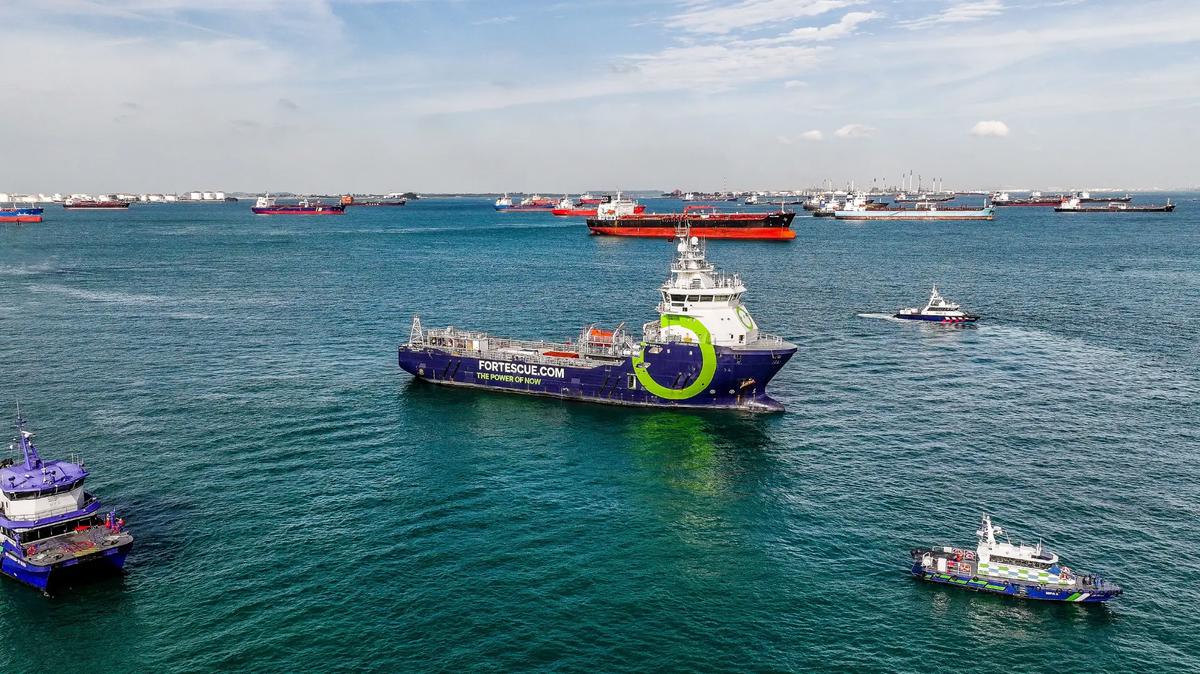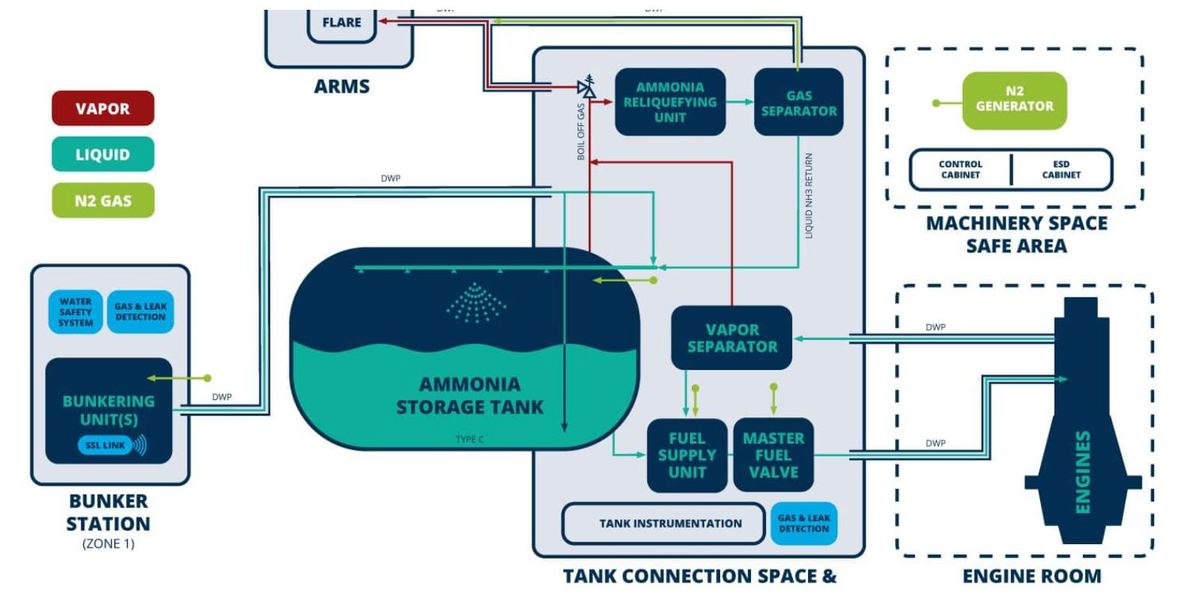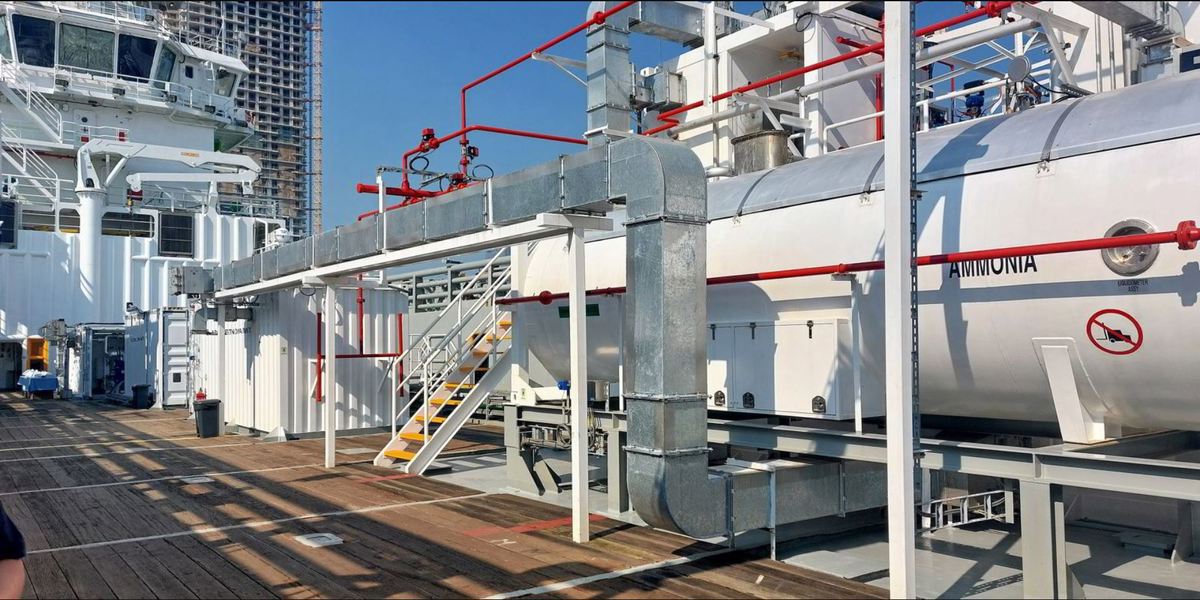Future Fuel Talks: Ammonia readiness isn’t a checkbox, it’s a process – Auramarine
Adopting ammonia as a marine fuel isn’t about crossing a threshold but about preparing every layer of the system to handle it safely and effectively, Auramarine’s John Bergman told ENGINE.
 IMAGE: Fortescue's ammonia-capable vessel, Green Pioneer. Fortescue
IMAGE: Fortescue's ammonia-capable vessel, Green Pioneer. Fortescue
The shipping industry’s interest in ammonia as a future marine fuel is increasingly visible in vessel orders.
According to classification society DNV, three ammonia-capable ships are currently in operation, all retrofitted. Another 37 ammonia-capable newbuilds are on order for delivery by 2029.
Bunker fuel pilots have also begun. Last year, Australian mining giant Fortescue’s tugboat Green Pioneer trialled ammonia as a bunker fuel – marking a small but symbolic step towards making ammonia-powered shipping less abstract.
But ammonia has never been used as a marine fuel at scale. Its high toxicity and lack of established handling protocols mean shipowners face a steep learning curve before turning theoretical potential into safe, real-world operations.
The real test lies in the layered capabilities required to use ammonia safely at sea, John Bergman, chief executive of Finnish fuel supply system manufacturer Auramarine told ENGINE in an exclusive interview.
Shipowners must prepare every layer of the system to handle ammonia safely and efficiently, he added.
Auramarine is developing ammonia fuel supply systems tailored for use on both two- and four-stroke ammonia-fuelled vessels. It includes bunkering units, reliquefaction technology, tank design and onboard fuel delivery.
The supply system also has safety mechanisms such as ammonia mitigation and control systems, gas and leak detection, nitrogen generation and bunkering water safety systems, according to the company’s website.
 GRAPHIC: Technical blueprint of Auramarine's ammonia fuel-supply system. Auramarine
GRAPHIC: Technical blueprint of Auramarine's ammonia fuel-supply system. Auramarine
Ammonia’s practical hurdles
The fuel’s toxicity changes the risk profile of routine operations and demands additional safeguards. Bunkering, in particular, becomes a high-stakes procedure.
According to Bergman, it requires pre-transfer safety checks, purging routines, gas-tight connections and full personal protective equipment for crew. The process takes 2-3 times longer than bunkering heavy fuel oil and requires dedicated storage infrastructure. A post-bunkering cool-down period also adds time before a receiving vessel can depart.
Even with these safeguards in place, there’s little room for human error.
Classification societies such as ABS and ClassNK have emphasised the need for automated bunkering and, potentially, unmanned engine rooms to minimise crew exposure during ammonia handling.
While full automation remains a longer-term ambition, Bergman believes remote monitoring and control will become a standard feature in next-generation vessels.
“Processes like fuel valve control, leak detection, tank monitoring and emergency venting are increasingly being routed through bridge control,” he said. “Remote shutdown and emergency venting can be handled from the bridge. That’s becoming a minimum standard in new systems.”
Shipowners can also invest in automation for emergency handling. But “it’s not plug-and-play.” Integrating automation with a vessel’s control architecture still requires human oversight, crew training and built-in redundancy to ensure safety, Bergman noted.
Another practical challenge stems from ammonia’s lower energy density compared to conventional marine fuels. To cover the same distance as vessels running on VLSFO or even LNG, ammonia-fuelled ships must either carry larger fuel tanks or refuel more frequently, both of which can affect cargo capacity.
Bergman suggests these trade-offs are easier to manage when they are addressed at the design stage, making newbuilds more suitable for ammonia adoption than retrofits.
 IMAGE: Onboard Fortescue's ammonia-capable vessel, Green Pioneer. UK P&I
IMAGE: Onboard Fortescue's ammonia-capable vessel, Green Pioneer. UK P&I
Ammonia-ready is not ready
This could be one of the reasons for a broader wave of ammonia-ready vessels, which are distinct from ammonia-capable vessels. These are typically designed with space or basic structural provisions for future conversion. But they are not built with onboard infrastructure that allows for ammonia to be used immediately as a bunker fuel.
Ammonia-ready vessels offer shipowners flexibility while waiting for technologies to mature, supply chains to expand and costs to come down.
But while the ‘ready’ label implies a degree of preparedness, it often underplays the work still required to make such ships truly ammonia-capable.
“It depends on how ‘ready’ they really are,” he said. “Some are just tank-ready, others have dual-fuel systems that can be upgraded. But it’s still a big job as piping, safety systems, ventilation and sensors all need to be installed. And you also need crew training. So [it's] not minor, but faster than full retrofits.”
While shipowners can keep their options open by ordering ammonia-ready ships, actually operating on ammonia requires investment across systems, training, safety protocols and port-side coordination.
Given those demands, Bergman expects early ammonia adoption to be concentrated among larger vessels on fixed trade routes such as container ships, which have more predictable operational routines and fuel logistics can be tightly managed.
By Konica Bhatt
Please get in touch with comments or additional info to news@engine.online





